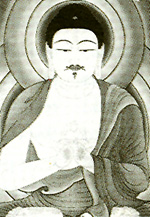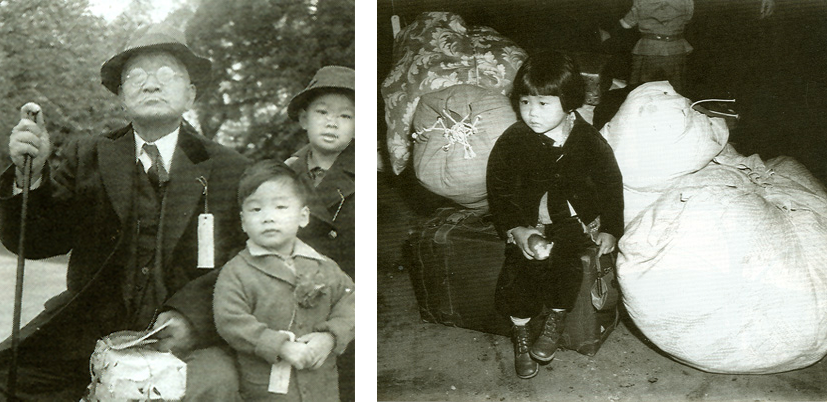
Pure Land Buddhism in North America is represented by one of its Japanese schools, Jodo Shinshu or Shin Buddhism, incorporated in 1898 in San Francisco as the Buddhist Mission of North America. In 1944, at the Topaz Concentration Camp in Utah, this was changed to the Buddhist Churches of America (BCA) in order to make it sound less alien and objectionable to the general American public. Its history may be considered in two phases: from its founding to 1952, when Japanese immigrants became eligible for naturalization (Walter-McCarran Act); and from, 1952 to the present, during which time American society has undergone vast changes in the areas of both racial tolerance and religious pluralism.

When Japanese laborers were brought to Hawaii and the United States to replace the Chinese who were banned entry by the Chinese Exclusion Act (1882), the majority came from prefectures considered traditional strongholds of Jodo Shinshu. Like the Chinese before them, they suffered all kinds of legal discrimination—local, state, and national. They could not become naturalized citizens, lease or buy land, or testify against whites. They were forbidden from certain occupations, their children attended segregated schools, and they were subject to miscegenation laws.
To create a bulwark against an alien and intolerant society, they established Shin Buddhist temples and built a dynamic sangha (community of practitioners) for mutual aid and protection. Japanese immigration was virtually stopped in 1907 by executive decree and finally legally banned by the Oriental Exclusion Act of 1924. In December 1941, anti-Japanese prejudice culminated with the arrest and detention by the FBI of 2,000 community leaders, including Buddhist priests. In the following year, Executive Order 9066 justified the incarceration of 120,000 people, 77,000 of whom were American citizens by birth. All this was carried our without due process of law, causing Supreme Court Justice Frank Murphy to call it “the legalization of racism.” Throughout the first half of the twentieth century, to be a Buddhist was considered to be un-American and disloyal.

When the imprisoned Japanese Americans were released from the concentration camps in 1945 and returned to the West Coast, the Buddhist temples became temporary hostels for the majority of the people who had no place to call home. The second generation, or Nisei, whose average age was about twenty-three, began to take leadership of the BCA and to integrate Buddhism into American society by initiating such actions as getting the Scout movement to create Buddhist religious awards—Sangha for Boy Scouts, Karuna for Camp Fire Girls, and Dharma for both.
They successfully lobbied the U.S. Army to identify Buddhists with a “B” on dogtags (previously they had been classified “P” for Protestant), to inscribe the Wheel of Dharma, the dharmachakra, on military graves cones for Buddhists, and co recognize Buddhist chaplains. The groundwork for training Buddhist ministers in this country was conceived at this time, evolving eventually into the Institute of Buddhist Studies, now formally part of the Graduate Theological Union in Berkeley, California. One representative of this early period is Yehan Numata (1897-1994), who became a successful industrialist and founded the Society for Promoting Buddhism. Among its many projects, the most important is the placement of more than six million copies of The Teaching of Buddha in 7,500 hotels around the world; the establishment of chairs in Buddhist Studies at Harvard, Chicago, UC Berkeley, Hawaii, Smith College, Toronto, Oxford, Leiden, and other universities; and the sponsorship of the English translation of scriptures from the Chinese Buddhist Tripitaka.

In the second half of the century, beginning in the 1950s, Buddhism became more acceptable through growing American contacts with Asia, and, within the last few decades, Zen, Tibetan Buddhism, and Vipassana have each attracted a considerable following. In contrast, the BCA temples are facing difficult times with a declining membership, a shrinking financial base, and a lack of ordained ministers. The major reasons are the high rate of Japanese-American out-marriages (70 percent) and no pressing need for an ethnic enclave among the third- and fourth-generation Japanese Americans, who are generally well-educated and economically stable. Currently, there are about sixty temples in the BCA (and thirty more in Hawaii under separate jurisdiction). Among them, the smaller temples will either fold or consolidate with larger temples, and those that may survive will move in two opposing directions.

On the one hand, temples found in areas with a sizeable Japanese-American population, primarily on the West Coast, will remain ethnic in conformity with what scholars call the ethnic nature of American religions. In my locality, in Western Massachusetts, for example, the Immaculate Conception Church, founded by Polish immigrants in 1904, still holds services in Polish with 95 percent of the parishioners being of Polish descent. Likewise, Portuguese is used in Our Lady of Fatima, French in St. Rose De Lima, Spanish and Korean in their respective churches. Black churches, too, retain their ethnic conformity. The ethnic Buddhist temples have rejected the earlier service formats and emphasize Sutra chanting, but they are developing activities uniquely Asian-American, such as dharma schools for children, taiko drumming, Bon dance festivals, Hana-matsuri (birth of Buddha celebration), and so on, which are not normally a part of the Shin tradition in Japan.

On the other hand, although small in numbers, Shin temples are emerging that include more and more convert Buddhists. In some instances they serve in leadership roles, such as presidents or officers on the temple boards, as well as teachers in dharma schools and study classes. It will be interesting to see whether or not these temples increase their non-Japanese memberships in the coming years. At the annual general conference of the BCA held in February 2001, a notable increase in the number of Caucasian delegates was reported.
Another interesting recent phenomenon is the formation of Shin Buddhist sanghas independent of the BCA. They draw membership from the larger American society, frequently maintaining contacts with each other through the internet. Examples of these small Shin Buddhist sanghas are found from Massachusetts to Alaska. This is partially due to the growing recognition that Shin Buddhism is another significant expression of Mahayana Buddhism. With the English publication in 1997 of the collected works of Shiman (1173-1262), the founder of Shin Buddhism, more people will have direct access co his teaching. A study of his works should correct the stereotypes attached co Shin Buddhism: that it is a watered-down version of the Buddha-dharma, or that it is an imitation of Christian faith.

No one can predict the future of Pure Land Buddhism in North America, especially in its institutional form, but there is no question that it will add a spiritual depth and breadth to Buddhism in the West. And it may even have salutary effects on other areas of Western intellectual and religious life. This is because of its emphasis on boundless compassion, which is nonjudgmental and all-inclusive, and because of the cultivation of self that is tolerant, open, and supple, affirming human finitude—limited, imperfect, vulnerable, and mortal—as essential for enlightenment. Shin Buddhism, being part of the Mahayana tradition, teaches the basic doctrines common to all schools, such as no-self, impermanence, emptiness, the bodhisattva ideal, and so on, but it does so from the perspective of the lay practitioner. Appreciation of this Pure Land approach should minimize the self-righteous arrogance that I notice among some convert Caucasian Buddhists, who imitate a monastic discipline while maintaining a secular, lay lifestyle.
Thank you for subscribing to Tricycle! As a nonprofit, we depend on readers like you to keep Buddhist teachings and practices widely available.